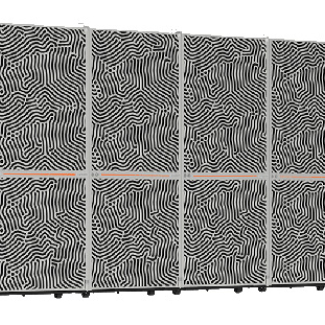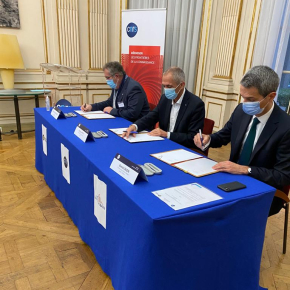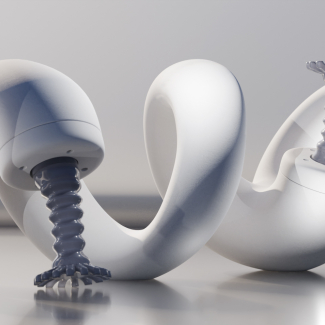
High-temperature, low carbon processes: the challenge for the new Canopée laboratory
The CNRS, l’Université de Lorraine and Saint-Gobain Group signed, this Friday, October 23, 2020, the creation of the Canopée laboratory, dedicated to the study of materials and “systems” under extreme temperature conditions. The objective is to reduce the carbon footprint of high-temperature manufacturing processes. To meet this challenge, this “wall-less” laboratory will bring together experts in material and thermal science located in France, in Orléans, Aubervilliers, Nancy, and Cavaillon.
The manufacturing of products at high-temperature poses a specific challenge, as measurement and instrumentation are difficult at the temperatures involved (500-2700°C), and the behaviour of materials has not always been modelled, thereby limiting optimization and control during these processes, especially with regard to the reduction of CO2 emissions.
This gave rise to the initiative led by Cemhti (in Orléans) and Lemta (CNRS/Université de Lorraine) (in Nancy) of the CNRS1 and two Saint-Gobain research centres (Saint-Gobain Research Provence and Saint-Gobain Research Paris), with the aim of combining their expertise in the field through the creation of a joint “wall-less” laboratory called Canopée, which stands for “enjeu CArbone : matériaux inNOvants pour des Procédés Economes en Energie” (CArbon stakes: inNOvative materials for Economical Energy Processes).
“Our already powerful and fruitful relationship with Saint-Gobain, thanks to three joint research structures, will be further strengthened by this new collaboration,” emphasizes CNRS Chairman and CEO Antoine Petit. “We are very pleased with this new collaboration with the CNRS and l’université de Lorraine to develop higher-performance materials while reducing the carbon footprint of our industrial processes. It is a key issue that is in keeping with the company’s commitment to be carbon neutral by 2050,” affirms Saint-Gobain COO Benoit Bazin. “The conception and production of materials and their use at high temperature to reduce CO2 emissions is a major scientific challenge that we want to meet by combining our expertise in a joint laboratory,” underscores Pierre Mutzenhardt, president of l’université de Lorraine.
Created for a period of 5 years, the goal of Canopée is to establish a greater understanding of thermal transfers—from the scale of the material to that of the industrial installation—as well as develop accurate measurement methods under extreme conditions for the material properties and physical scales characteristic of these processes. What makes it original is the combination of materials expertise—including the processes for shaping them (on the scale of the laboratory, model, or industrial pilot) and their microstructural characterisation (at room temperature or while hot)—with expertise in thermal science, ranging from the accurate measurement of temperature to that of the thermo-physical properties of materials (solids or liquids, up to extreme temperatures), in addition to the simulation of thermal transfers.
- 1Cemhti: Extreme Conditions and Materials: High Temperature and Irradiation Lemta: Theoretical and Applied Energetics and Mechanics Laboratory.


